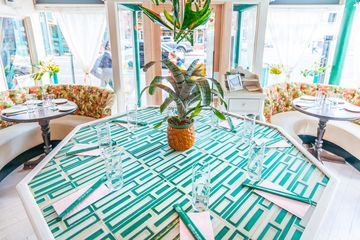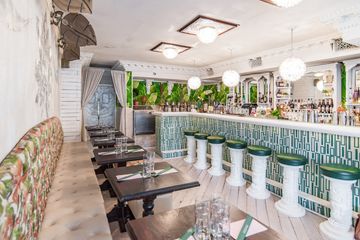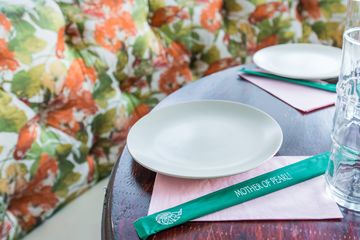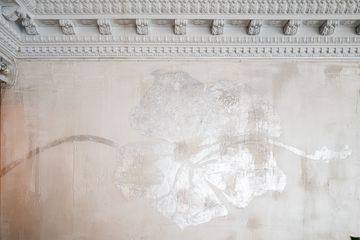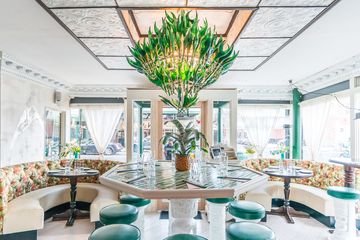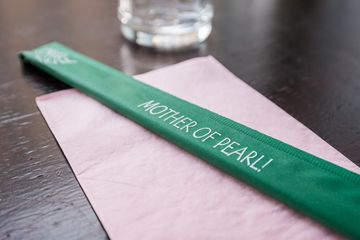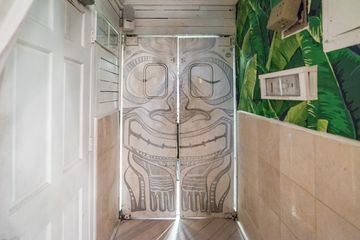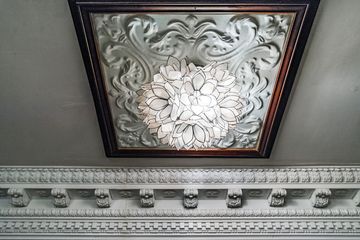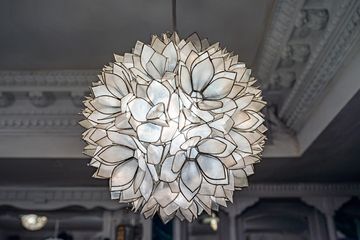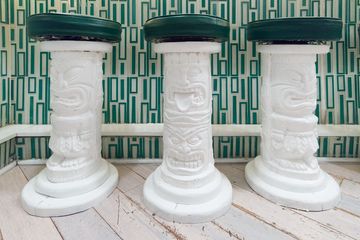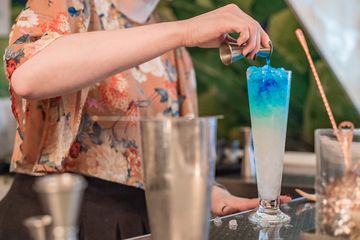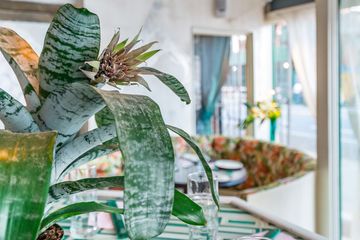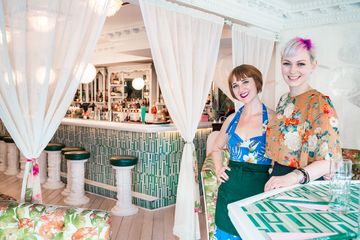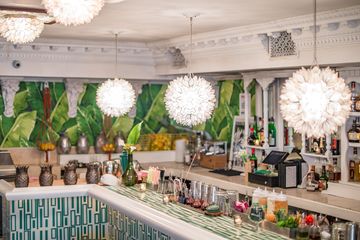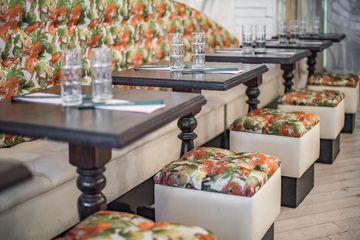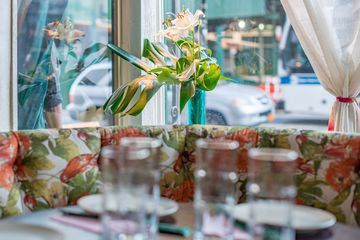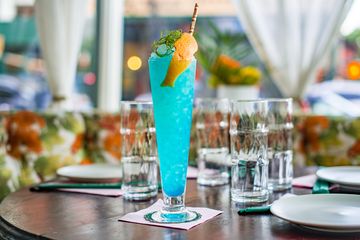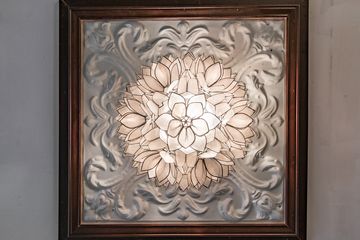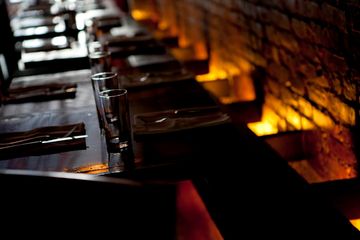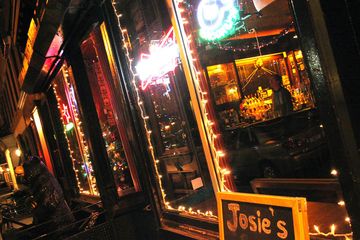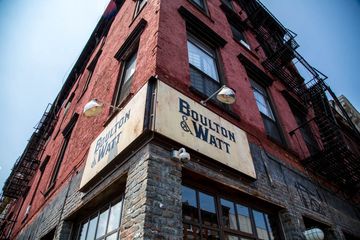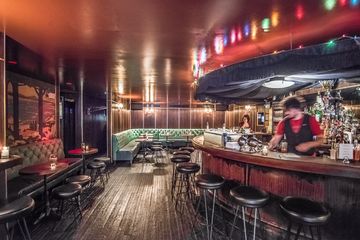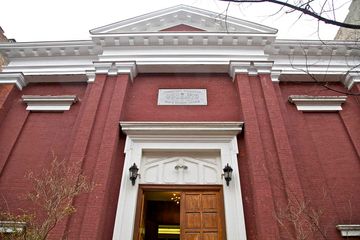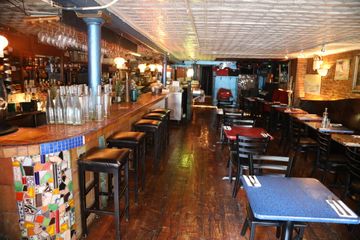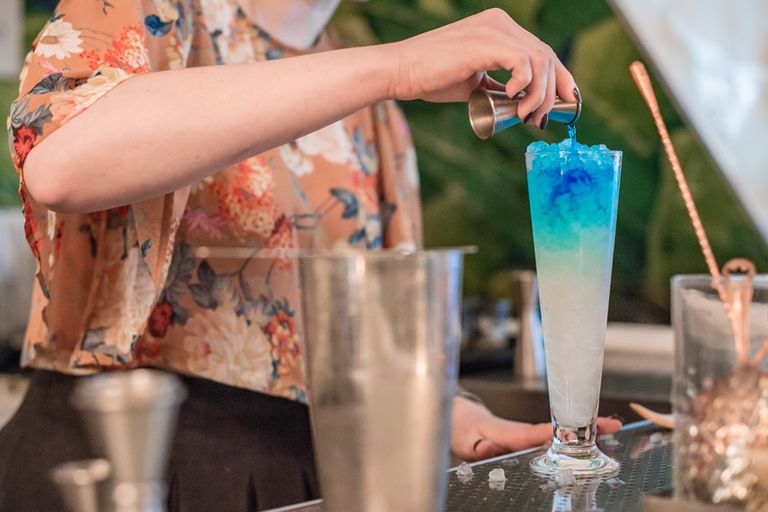
Having just spoken with Ravi DeRossi at Avant Garden, I walked with him to his new bar, Mother of Pearl, which opened just around the corner in late 2015. He gave us the low-down as they were getting ready for the evening.
Mother of Pearl used to be another bar owned by Ravi, The Gin Palace, that started sinking due to structural problems with the building. They had to shut down for a year and as a date approached to reopen, Ravi decided he did not really want to continue with the same concept. Mother of Pearl was born, a glamorous tiki bar that is decidedly not kitschy. In fact, Ravi has coined a new phrase for the style: “Post-modern Polynesian.”
As in all his other establishments, Ravi has carefully selected every detail of the design. How does he find his decor? He googles his idea. The beautiful leaf fans along one wall, the glass tile on the counter-top, and the mother of pearl lamps were all found while sitting at his computer. The main chandelier in the front room is a beautiful glass piece that was made in Murano, Italy and the stools were designed specifically for Mother of Pearl to look like Tiki heads.
Before he had to run, Ravi introduced me to Jane Danger, his beverage director, saying, “Jane and I have unfortunately been friends for twelve years.” Jane told us they were neighbors on 7th street. They both had dogs and “they’d shoot the shit, smoke cigarettes, and drink wine out of coffee cups.” There is clearly a great deal of respect and history between them. They "have fun fighting about light fixtures.” She was very happy when the beautiful flower-like lamps arrived, “You got me flowers,” she told Ravi, “Yay, I like that.”
I remembered meeting Jane a few years ago when she and Ravi opened Jane's Buns on St. Marks. Today, Ravi's Proletariat is there. Jane is effortlessly cool as she moves behind the bar. She was a member of the original staff at Death and Co and now splits her time here at Mother of Pearl and upstairs at Cienfuegos. As she was prepping for the evening, Jane shared a bit of her story with us. She moved to the city when she was nineteen and got a job as a cocktail server at CBGB’s on her second day in the city. There she learned to take care of herself - and to make drinks.
Originally she wanted to be a model, but that plan did not last very long. “I think I’d rather eat half this cake,” she told us humorously. She then went on to recite a list of things she adores: crafts, cheese, eating, her glue gun, sparkles. Her cocktails are whimsical and delicious, made with exacting detail. Her greatest source of pride is the people that work with her. She told us, “I’m shy and weird and the people here are my lifeline. They are smart and supportive.”
We enjoyed observing her as she assembled her current favorite, The Pink Dolphin, a concoction of grapefruit, seaweed, cinnamon, lemon, blue curaçao, and pisco. It was a gorgeous blue sunset with a pink dolphin grapefruit garnish leaping from the rim. Jane likes to go down the road less travelled with her seasonally driven and locally sourced creations: her “inspiration for fun things comes from a dive bar beginning.” She also mentioned that she regularly checks out the farmer’s market at Tompkins Square Park for produce and flavor ideas.
Mother of Pearl is stocked to make classic cocktails, traditional tiki, and their own signature cocktails. Jane quipped, “if you can’t make a classic, you aren’t getting very far,” and “tiki is an idea, a feeling, a fun exploration.” We experienced the best of both worlds at this beautiful bar. It is a breath of fresh air that transported us to a “post-modern Polynesian” wonderland.
